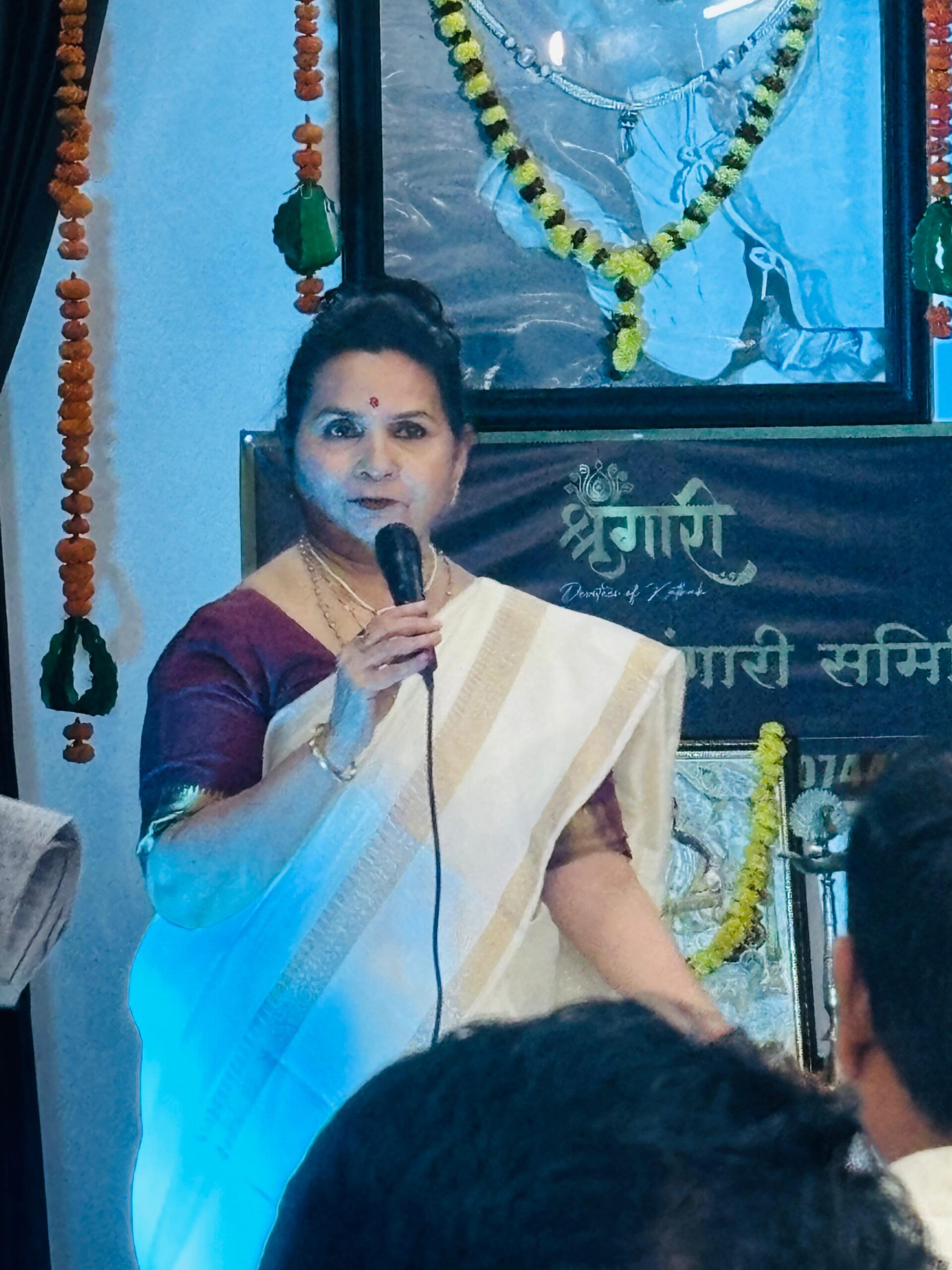Marking of the sweet image of Krishna on the third evening of Konark festival
Shashiprabha Tiwari
Bhubaneswar: The Konark Sun Temple, Chandrabhaga Beach, Ramachandi Temple, and the lush green surroundings create the perfect setting for the Konark Festival. The open-air stage, adorned with greenery, twinkling lights, and a ground decorated with alpana art, presents a picturesque scene. In this atmosphere, colorful gateways and selfie points featuring traditional musical instruments like mardal and tabla attract visitors.
Every evening in such an ambiance, thousands of people, including distinguished guests, domestic and international tourists, and locals, gather in large numbers. Amidst the twilight hues, classical dance performers weave a magical world through their captivating performances. As the day progresses, the vibrant sounds of folk instruments played by local artists fill the air from the third quarter of the day, creating a festive atmosphere. It feels as though they are inviting the audience to come and join the celebration at the venue.
On the third evening of the Konark Festival, the artists of Odissi dance group Darpani delivered a mesmerizing performance under the leadership of Arnab Bandopadhyay. The second presentation featured Dr. Sunanda Nair and her fellow artists performing in the Mohiniyattam dance style.
In the Odissi performance, the essence of Guru Kelucharan Mohapatra’s legacy was vividly present, while in Mohiniyattam, the influence of Guru Kanak Rele could be deeply felt. These presentations beautifully showcased the power and impact of the Guru-Shishya (mentor-disciple) tradition.
In the performances by Darpani, the artists appeared to carry forward the legacy of Guru Kelucharan Mohapatra, while the influence of Guru Kanak Rele was evident in Sunanda Nair’s choreographies. Guru Kanak Rele enriched the Mohiniyattam dance style by exploring innovative themes, reflecting the infusion of novelty into the ancient traditions of Indian classical art.
The Odissi performance began with a dance based on Mahakavi Jayadeva’s Gita Govinda, featuring the ashtapadi “Shritha Kamala Kuch Mandala.” Through melodious verses and enchanting music, various forms of Lord Vishnu were depicted. Arnab Bandopadhyay and his fellow dancers explored themes such as Hari as Garudavahana, the Ram Avatar’s Sita Swayamvara, Ravana’s slaying, and the Dashavatara. The second presentation was Hansadhwani Pallavi, a seamless blend of dance and music, choreographed by Guru Kelucharan Mohapatra and composed by Pandit Bhubaneswar Mishra.
The next Odissi piece, Krishna Katha, was conceptualized by Arnab Bandopadhyay, with musical compositions by Himanshu Shekhar Swain and Soumya Ranjan Nayak. It incorporated Krishna Tubyam Namah, verses from the Srimad Bhagavad Gita, and excerpts from Sri Krishnashtakam. Through dance, Krishna’s universal form (Vishwarupa), his Chaturbhuja (four-armed) manifestation, the Govardhan-lifting episode, the Kaliya Mardana story, and connections to Ram, such as the Ahalya episode, were vividly portrayed.
The second presentation of the evening was the Mohiniyattam performance by Dr. Sunanda Nair. It began with Ganapati Talam, based on the composition “Gajapati Om Ganapati Gajendra,” which depicted various forms of Lord Ganesha, such as Gajapati, Ganapati, Ganadhipati, Vinayaka, Siddhivinayaka, Ekadanta, and Vakratunda. Her second presentation was Katyayani Devi, portraying Goddess Durga’s forms through the compositions “Jay Jay Mahishasuramardini” and “E Girinandini.” The concluding piece was Madhurashtakam, based on Vallabhacharya’s poetry, depicting Krishna’s sweet and enchanting forms. All these choreographies were conceptualized by Dr. Sunanda Nair.
Share this content:










Post Comment